Light Scattering Aerosol Spectrometer
Dust and aerosol particles can be measured optically. There are instruments that operate using a total signal resulting from light scattering in a measuring chamber (nephelometers). This signal is generally directly proportional to the mass concentration. Another type of instrument is particle counters, which measure very low particle counts and divide them into several particle size classes—so-called cleanroom counters. Highly accurate optical instruments include the so-called LSAS (Light Scattering Aerosol Spectrometer), which provides a precise spectrum of particles (count and size) as output.
LSAS Measuring Principle
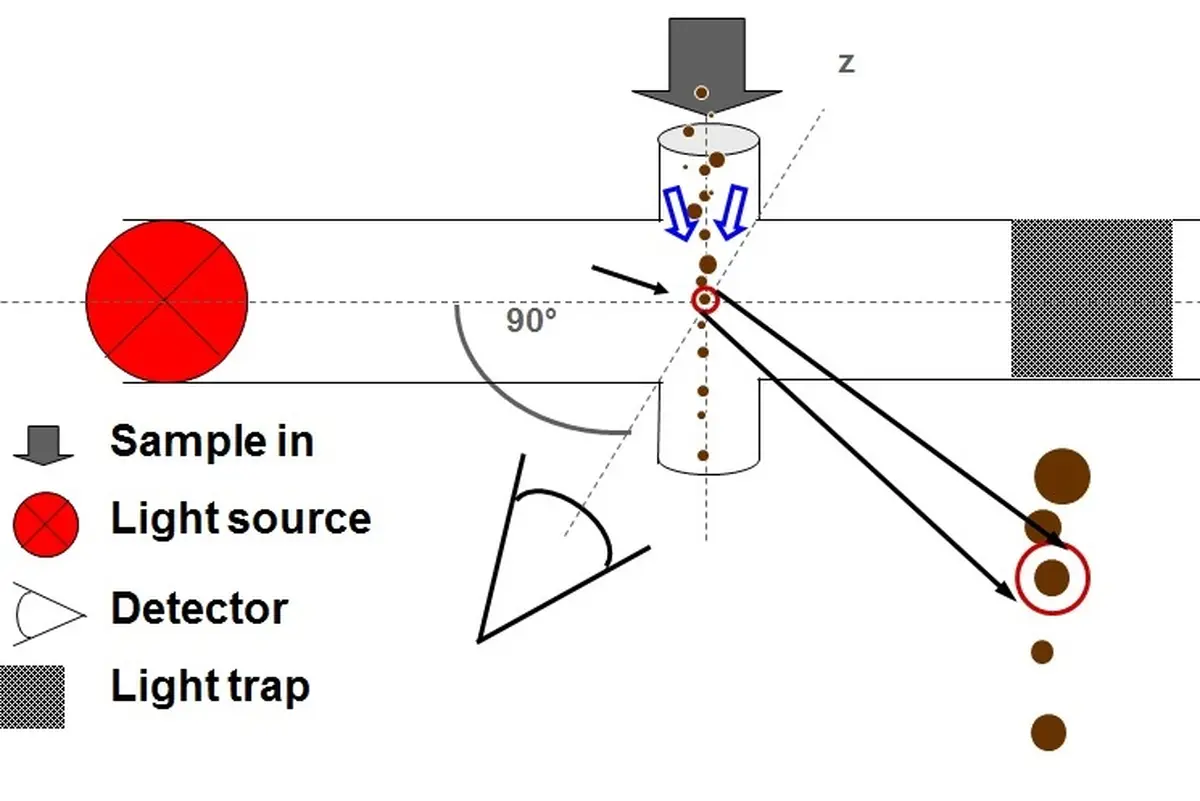
A combination of flow rate, inlet nozzle, and the use of an air curtain ensures that the incoming particles are aligned like a “pearl necklace.” The particles then pass through a (laser) light beam. At an angle, a detector is placed on one side and often a mirror on the other. Opposite the light source is a “light trap,” usually a matte-black tube. This setup ensures that only the signal from direct light scattering by the particle at a specific angle reaches the detector (either directly or via the mirror). The particles successively pass through the laser beam, and the detector generates measurement signals. Each signal represents one particle. The signal amplitude is a measure for the particle size. Thus, a measurement with an aerosol spectrometer results in particle counts and associated particle sizes. By applying the particle’s density, the data can be converted to a mass distribution.
Laser Light Scattering
Light scattering is the collection of intensity in various directions after the laser light encounters a particle. Scattered light is a mixture of diffraction, refraction, reflection, and absorption as the particle flies through the laser beam. The intensity of the scattered light detected depends on the particle size, the refractive index, and the measurement angle. The technology has a lower limit to the measurable particle size—below which background noise from the detector electronics and air gas molecules dominates.
Once particles are large enough, few extra effects occur, and the measurement becomes “simple.” The intensity signal is proportional to the square of the diameter (dp²).
However, the laser light can also interact with the particle. For particles much smaller than the laser wavelength, scattering is enhanced due to the induction of an oscillating dipole in the particle. This increase in signal is known as Rayleigh scattering, where intensity is proportional to the particle diameter to the sixth power (dp⁶).
MIE scattering applies to particles with a size comparable to the wavelength of light. This results from a strong light-particle interaction with resonance effects, leading to complex data analysis. These effects present a challenge in calibration and signal processing; different particle sizes can produce the same scattering intensity in this range! Grimm aerosol spectrometers therefore measure the scattered light using a mirror over a wide solid angle to smooth out resonance effects. This enables near-unique assignment of particle size to light intensity.
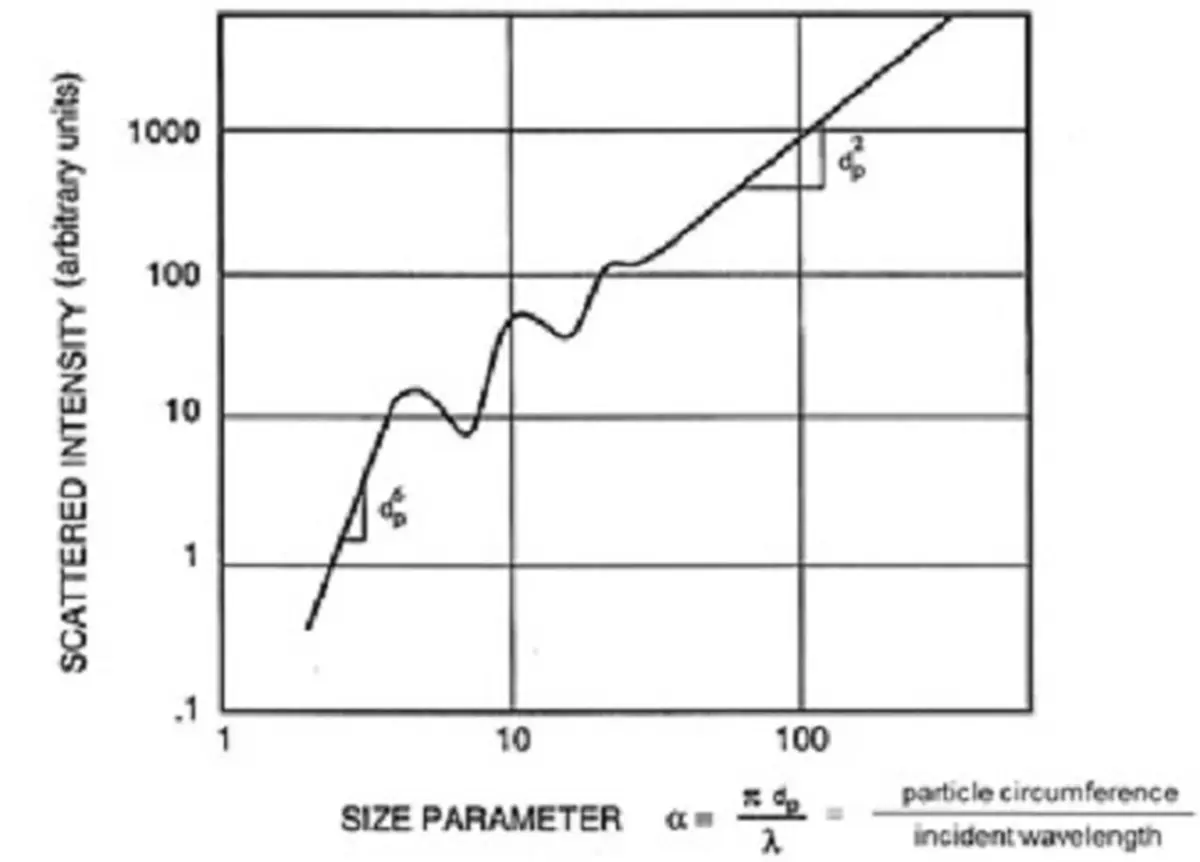
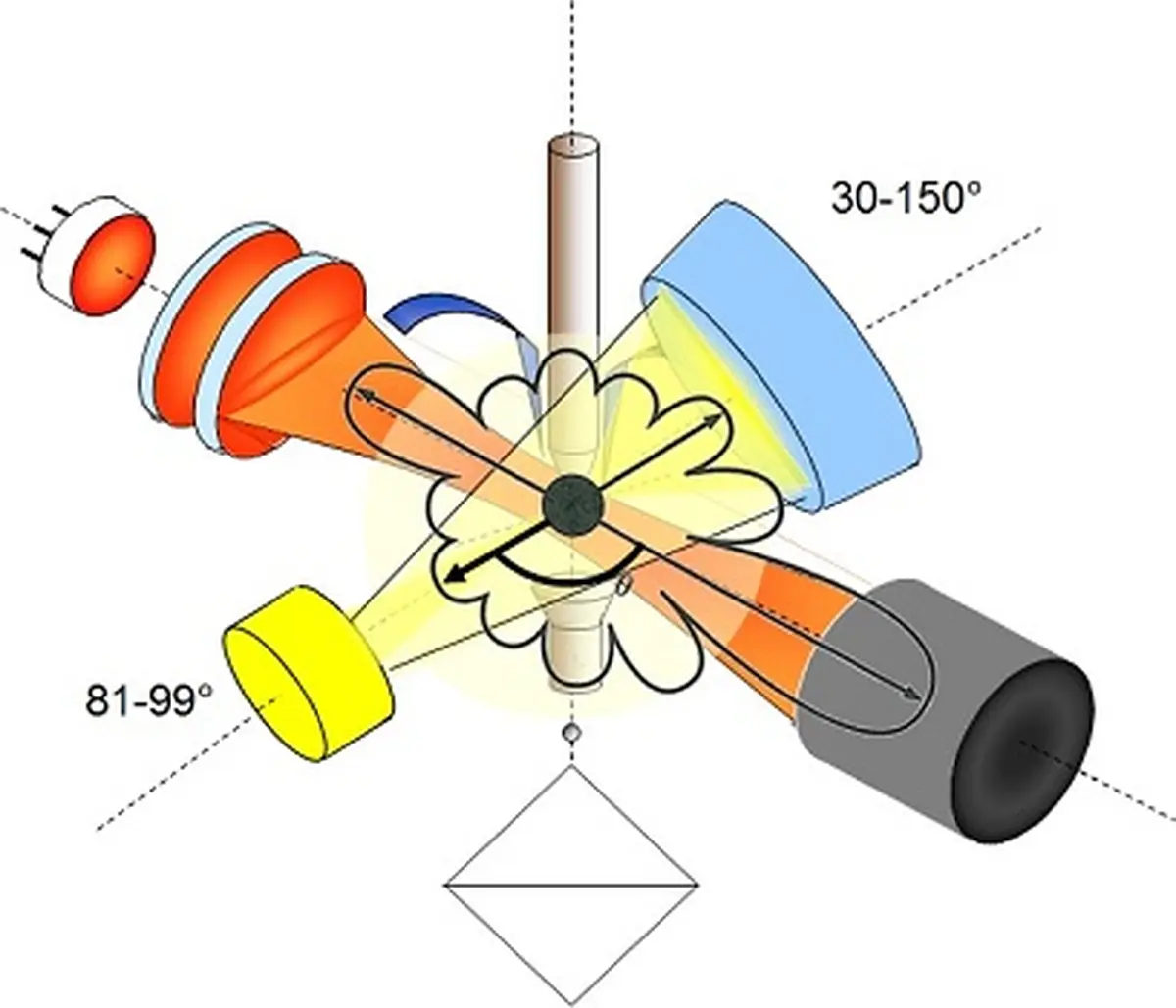
Determining Mass Fractions
An aerosol spectrometer measures each particle individually, determines particle concentration, and classifies them by size. This is based on light scattering intensity—not an absolute mass measurement. Since a full spectrum is measured, various mass concentrations can be calculated simultaneously.
The efficiency curves for workplace and environmental measurements are as follows:
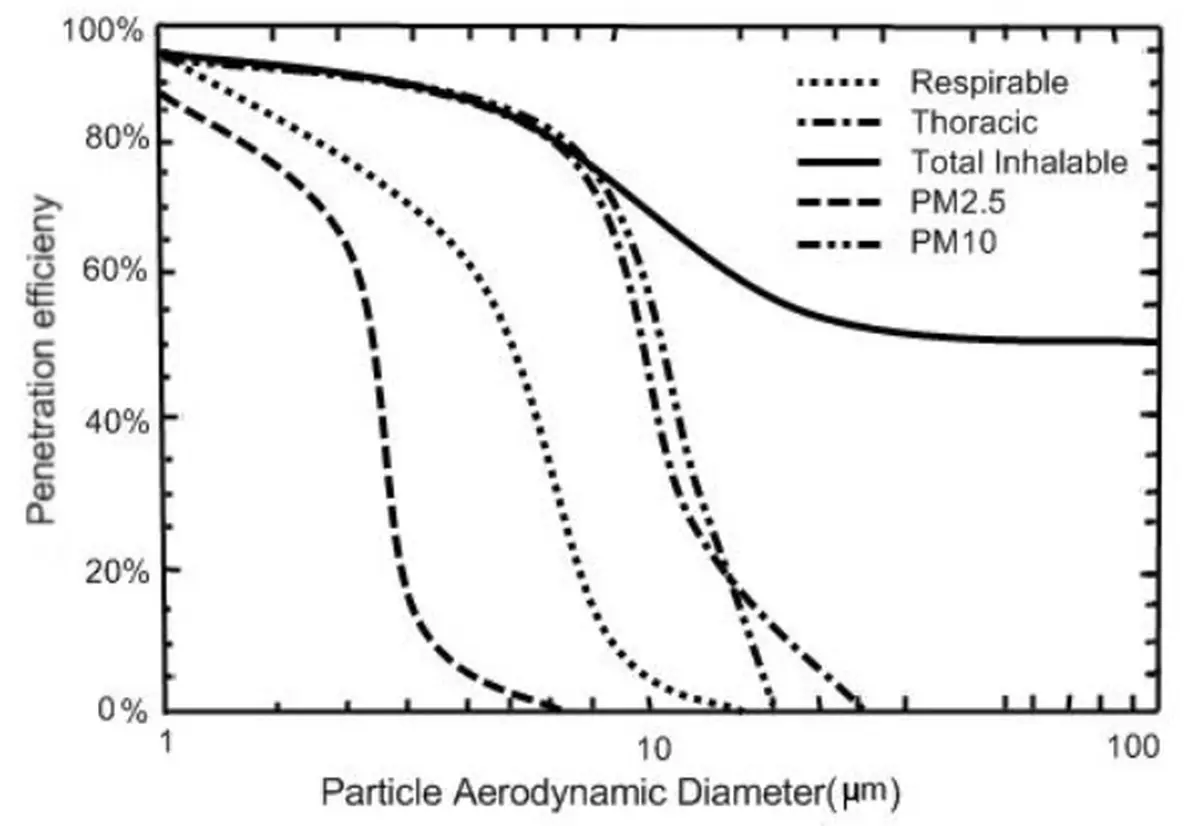
These curves can be implemented mathematically. By assuming a particle density and approximating particles as perfect spheres, mass fractions can be calculated. In some cases, specific densities are defined per particle size class.
11-D Grimm Aerosol Spectrometer
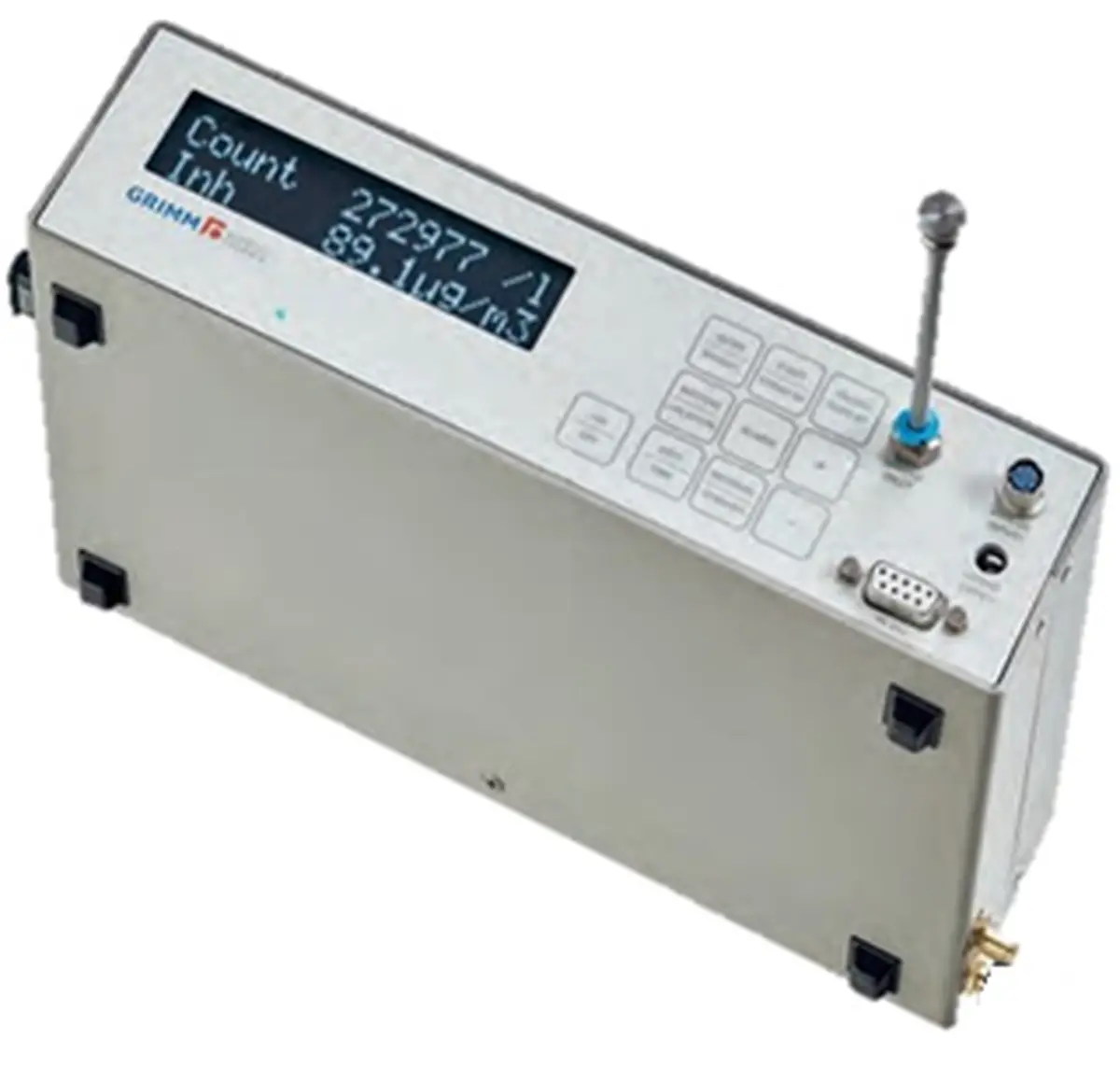 The model 11-D from Grimm Aerosol is a portable aerosol spectrometer that uses laser light and a 90-degree detector angle. It measures particle counts and classifies them into 31 equally spaced size bins. Based on these counts and sizes, it calculates several defined particulate mass fractions. For “environmental” fractions (e.g., PM10, PM2.5), varying densities are used in the calculations. For workplace-related measurements (e.g., inhalable, respirable), the monitor uses a fixed density of 1.68 g/cm³ across all channels. The instrument provides 12 different mass concentrations. Environmental fractions: TSP, PM10, PM4, PM2.5, PMcoarse, and PM1. Occupational fractions (based on 1.68 g/cm³): pm10, pm2.5, pm1, inhalable, thoracic, and respirable.
The model 11-D from Grimm Aerosol is a portable aerosol spectrometer that uses laser light and a 90-degree detector angle. It measures particle counts and classifies them into 31 equally spaced size bins. Based on these counts and sizes, it calculates several defined particulate mass fractions. For “environmental” fractions (e.g., PM10, PM2.5), varying densities are used in the calculations. For workplace-related measurements (e.g., inhalable, respirable), the monitor uses a fixed density of 1.68 g/cm³ across all channels. The instrument provides 12 different mass concentrations. Environmental fractions: TSP, PM10, PM4, PM2.5, PMcoarse, and PM1. Occupational fractions (based on 1.68 g/cm³): pm10, pm2.5, pm1, inhalable, thoracic, and respirable.
The included software displays results clearly in both table and graph format. It also calculates the mass distribution across the 31 channels, and all results can be easily exported to an Excel file.
The software also computes statistical values and visualizes the spread and location of the mass fractions using a Whisker Plot.
The 11-D aerosol spectrometer has high count efficiency across various particle sizes. The smallest classified particle is 250 nm. Through data processing of signals from each individual particle, perfect differentiation of various mass fractions is achieved with excellent repeatability. Applications are broad: filter efficiency testing, workplace monitoring, indoor air quality monitoring, environmental monitoring, and R&D applications.
